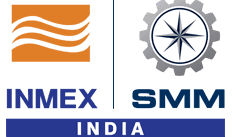Interview Prof Annie Bekker, Professor at Stellenbosch University
During your research trip on the "SA Agulhas II" you investigated how the steel structure of the South African research vessel reacts to wave action. What insights did you gain from this? And is that also relevant for merchant ships?
Regarding our insights about operating in ice, near the Endurance wreck site in the Weddell Sea the SA Agulhas II was beset in ice and was being squeezed by the compressive power of ice. The load at her bow reached 1.5 Mega-Newton. This was almost too close for comfort, given her hull limit load of 1.65 Mega-Newton according to DNV-ICE 10.
Manoeuvring in open water, we found that while the crew operate very carefully in ice, they sometimes use the ship in “ice mode” when sailing in open water to navigate to locations more quickly, and to save time. This increases the maximum speed of the ship by about 2 knots. However, we found that this mode of operation almost doubles the amount of fuel burnt. The crew is also very well-accustomed to rough sea conditions. The ice-going hull is rounded and has an extended stern. This disposes the ship to bow and stern slamming. Especially stern slamming is problematic as it causes whipping, or jelly-like bending of the vessel which lasts for up to 40 seconds. The resulting acceleration of the ship structure is much higher than anything we experience in ice.
Our findings are definitely relevant to merchant ships. In terms of slamming and whipping, the same 3 meter wave that impacts the stationary vessel from the bow would cause it to bend 10 times more if it impacted it from the stern. Slamming occurs as much as twice per minute under these conditions. Full-scale measurements such as ours could be valuable to new long cargo vessels who suffer from wave-induced vibration. Our research on suitable sensor layouts and the possible effects of whipping on structural fatigue life could benefit the understanding of the dynamic responses of cargo vessels. We have also been studying how humans respond to wave slamming and how this disturbs their sleep and work. This work could contribute comfort thresholds for cruise ships where a positive passenger experience directly affects business success.
What new possibilities does digitalization open up for your work?
We are able to automate ship observations and data analytics at increasing levels. The long-term access we enjoy to SA Agulhas II and the fact that our passengers are scientists make this ship a working laboratory through which we can continually improve and test our approaches. In the coming years we will be working on digital twins for the hull and propulsion shaft and use Mariner 4.0, a human-cyber-physical system that can contribute tactical and operational intelligence to support ship-related decisions.
Special hull shapes, smart equipment: What does the ship of the future look like?
In my mind the ship of the future will have a digital counterpart which will be accessible to its stakeholders. Sensors, models and physical assets will merge into a combined asset – and business will be driven by novel services which can be delivered through the innovative and reliable combination of these.
Prof Annie Bekker will be speaking at Maritime Future Summit on 2 February 2021 in Panel 2.
Participation is free of charge, and no registration is required.
More Informationen about Maritime Future Summit


